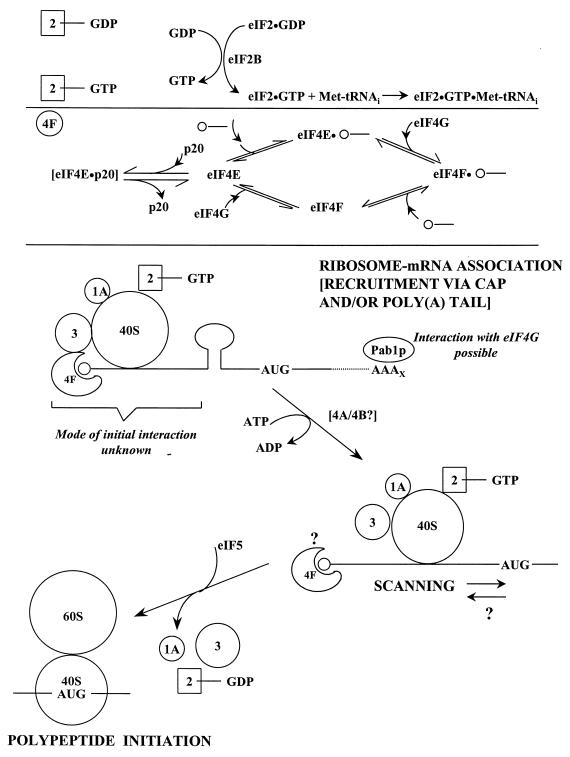FIG. 4.
Steps of translational initiation in S. cerevisiae. The recycling of eIF-GDP and the suspected dynamics of eIF4F complex formation are indicated schematically. p20 competes with eIF4G for binding to eIF4E, but the means by which this competitive interaction is regulated has yet to be determined. It is now thought to be primarily eIF4F that binds the cap (see next section). The interaction of Pab1p with eIF4G may provide an alternative route to mRNA-ribosome joining, but the significance of such a process in vivo is unknown. In yeast, the relationship between eIF4A-eIF4B helicase/annealing activity and scanning is still controversial. By analogy to mammalian models, other initiation factors have been included in the 43S preinitiation complex that is thought to perform scanning. Many questions remain the subject of further investigation, such as what happens to eIF4F during each cycle of initiation (see Fig. 8) and how eIF3 promotes initiation. It is not known whether scanning is strictly unidirectional. The release of most of the eIFs and the joining of the ribosomal 60S subunit lead to polypeptide initiation. The recent reports on eIF4H (458) and yIF2 (89b), which are not included in this figure, emphasize that we do not yet know the full complement of factors involved in initiation.

